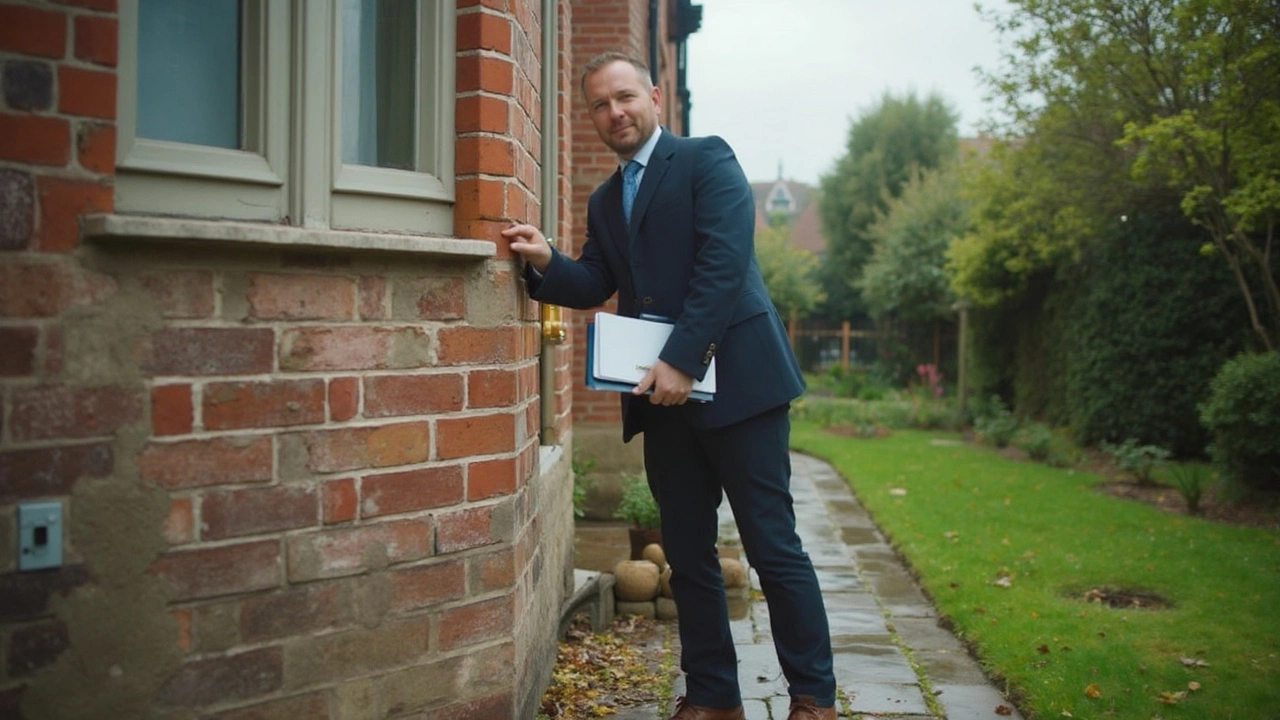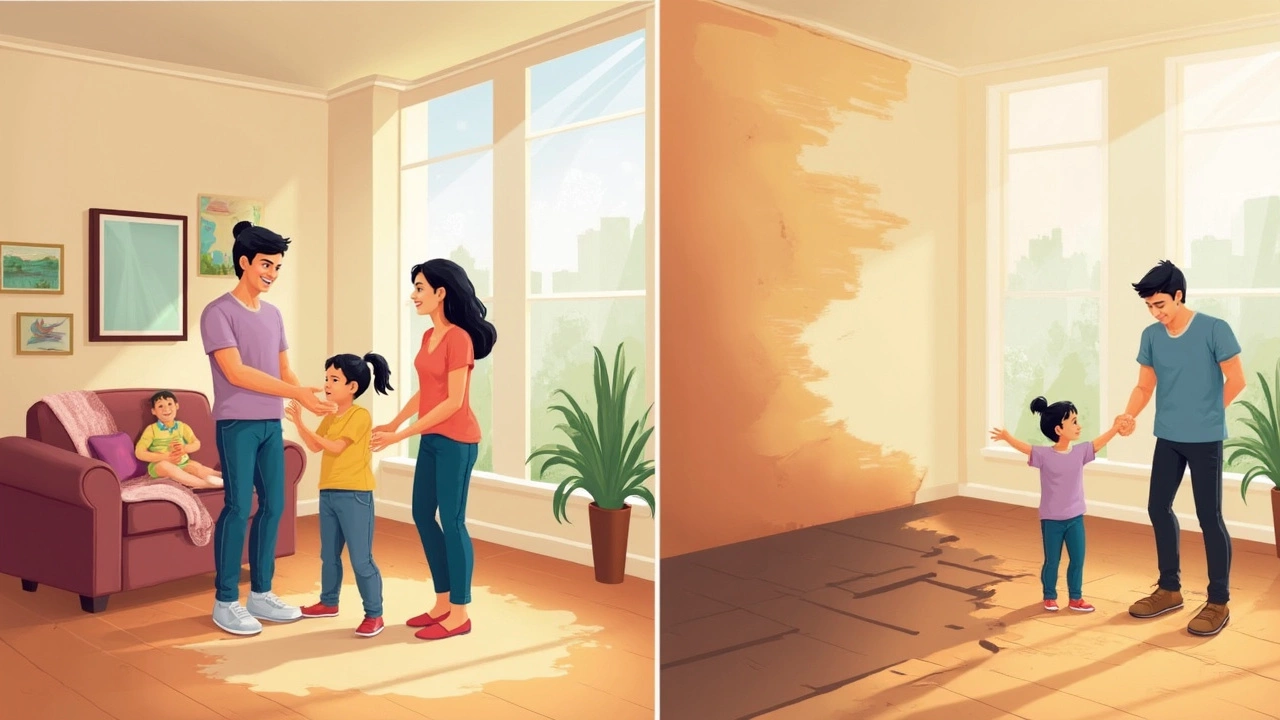Foundation Repair: Is It Really Worth It?
 Jun, 12 2025
Jun, 12 2025
Cracks in your walls, doors that won't close right, floors with a weird slope—these aren't just annoyances. They're signals your foundation might be in trouble. Ignoring them could mean way bigger headaches down the road, like major structural issues or scary repair bills that hit hard.
Why does this matter? Well, your foundation is basically your home's anchor. If it's shifting, everything above it is at risk. But jumping into repairs can be expensive, so plenty of folks wonder if it's really worth the hassle and cost. The truth is, sometimes fixing your foundation is the only thing standing between you and long-term damage. In some cases, making these repairs can even boost your home's value—a cracked foundation makes buyers nervous.
So, how do you know if you should fix it now or just keep an eye on things? And what options are out there besides the super expensive repairs you always hear about? Let’s break it down with facts, real costs, and practical tips so you’re not left guessing.
- Spotting Foundation Problems Early
- How Repairs Impact Your Home’s Value
- Comparing Costs: Repair vs. Replacement
- DIY Fixes vs. Professional Help
- Real Tips for Managing Foundation Issues
Spotting Foundation Problems Early
It’s easy to brush off a small crack or a sticky door, but those are sometimes the first signs that your foundation needs attention. The sooner you spot these problems, the cheaper and easier they are to fix. Waiting too long can make things worse, turning a little crack into a major repair.
So, what should you watch out for? Here’s a no-nonsense list:
- Cracks in walls, especially above door frames, windows, or where the wall meets the ceiling.
- Floors that aren’t level. Stand at one end of the room and look—if it’s sloping, that’s a red flag.
- Doors or windows that suddenly won’t close or seem off-balance. If they worked fine before and are sticking now, that could signal movement.
- Gaps between your walls and the floor or ceiling. Even hairline splits tell a story.
- Cracks in your home’s exterior bricks or foundation itself—particularly those wider than a quarter inch.
Sticking a piece of tape over a crack and checking if it gets longer in a few weeks is a classic DIY way to see if a problem’s growing. It’s simple, but it works. If you spot changes, it’s time to look into foundation repair before things spiral out of control.
Also, if your area gets a lot of rain, or if you’ve noticed water pooling near your home’s base, don’t ignore it. Water is a big player in many foundation issues—washed out soil or excess moisture can weaken the ground under your house fast.
Don’t be shy about poking around outside, too. If you see your foundation pulling away from your house or notice bulging walls in your basement, you’re past the “wait and see” stage. Call in a pro.
The takeaway? Catching foundation problems early makes repairs smaller and way less expensive. Set a reminder to check your home every few months. Little fixes now beat major repairs later, every single time.
How Repairs Impact Your Home’s Value
A shaky foundation is a red flag for home buyers and appraisers. It can knock a big chunk off your property’s price, and sometimes, homes with obvious foundation problems struggle to sell at all. According to real estate agents, a home can lose 10% to 20% of its value just from visible foundation damage. Ouch.
When you take care of foundation repair, you’re not just fixing cracks. You’re restoring trust. Potential buyers see a repaired foundation as one less problem to worry about. Some lenders won’t even approve loans for homes with active foundation issues, so repairs can literally open more doors if you’re thinking about selling.
If repairs are professionally done and come with a warranty, they’re even more valuable—nobody wants to inherit a ticking time bomb. Here’s a quick look at how foundation issues, and their fixes, can change your home’s price:
| Condition | Estimated Impact on Value |
|---|---|
| No issues | Full market value |
| Minor visible cracks | -3% to -7% |
| Obvious, unaddressed damage | -10% to -20% |
| Professionally repaired (with warranty) | Restored price, sometimes a small buyer boost |
To get the most out of your repair, hang on to all paperwork, before-and-after photos, and especially any transferable warranty. If you’re planning to sell, mentioning a recent professional repair with documents included can help attract buyers who’d otherwise be scared off. Trying to skip or hide repairs nearly always backfires, since most inspectors will spot foundation problems during a sale anyway.
Bottom line: repairs don’t just stop the damage—they help keep your home’s value from taking a major hit and even make it easier to sell down the road.

Comparing Costs: Repair vs. Replacement
When your foundation starts acting up, the big question usually comes down to this: fix it or tear it out and start over? There’s a huge gap in price between a basic foundation repair job and a full replacement, so it’s smart to crunch the numbers before making any moves.
Basic repairs—like fixing small cracks, sealing, or installing a few piers—can run from $500 up to $12,000, depending on the problem and where you live. Full foundation replacement, on the other hand, is a major construction project. You’re looking at costs from $20,000 all the way up to $100,000 for bigger homes or more complex issues. Most people don’t realize that replacing the foundation can sometimes mean jacking up your house and putting everything back together once it’s done. That’s why it costs way more and takes way longer.
Here’s a quick look at some real numbers:
| Type of Work | Average Cost (USD) | Time Needed |
|---|---|---|
| Small Crack Repair | $500 - $1,500 | 1-2 days |
| Pier Installation | $2,500 - $12,000 | 3-7 days |
| Underpinning | $8,000 - $30,000 | 7-14 days |
| Full Replacement | $20,000 - $100,000+ | 2-4 weeks |
The repair route is enough for most homeowners. You only really need a full replacement if the foundation is totally falling apart, or there’s a safety risk nobody should ignore. In other words, replacement is the absolute last resort.
"Most homeowners never need a full replacement. Addressing smaller problems early with tried-and-true repair methods is usually all that’s needed to restore stability and protect your investment." — National Association of Home Builders
If your house is historic, or the soil has totally shifted over the years, sometimes replacement can’t be avoided. But for those annoying cracks or a bit of sinking, professional repairs almost always do the trick and save you a huge pile of cash.
- Get a few different opinions—every house is different, and costs vary by region.
- Ask about warranties—some repairs come with lifetime guarantees.
- Double-check what’s covered by insurance. Most policies don’t include routine settlement, but they might help if damage came from a covered event (like flooding).
Don’t just chase the cheapest fix, though. Go with the method that actually solves the problem for good—otherwise you could end up paying a lot more later on.
DIY Fixes vs. Professional Help
A lot of folks wonder if they can tackle foundation repair on their own. Sometimes, you actually can—at least for minor stuff. For example, filling small cracks with hydraulic cement or epoxy is doable as a weekend project. It’s basically patch-and-paint, and kits cost about $20 to $50 at most hardware stores. This might help keep surface water out, but it won’t fix what’s going on underneath if your foundation is moving or sinking.
So, when is it OK to DIY, and when should you hand it off to the pros? Here’s a quick breakdown:
- DIY fixes:
- Hairline cracks in concrete (under 1/8-inch wide)
- Cosmetic patching (when cracks aren’t getting bigger)
- Improving drainage outside—like adding soil to direct water away
- Call a pro when:
- Cracks keep growing, or are more than 1/4-inch wide
- Doors or windows stick, or won’t square up anymore
- You see “stair-step” cracks in bricks
- Floors slope, bounce, or feel uneven
If you skip professional help for big issues, you could end up seeing more damage, higher bills, or even put your safety at risk. An actual study from HomeAdvisor showed that DIYing foundation repairs for major problems usually led to higher costs later—some people paid twice as much to fix what started as a "quick patch."
Check out this comparison of average costs:
| Type of Repair | DIY Materials | Professional Cost |
|---|---|---|
| Small crack fill | $25-$50 | $250-$800 |
| Major settling repair (piers) | Not DIY | $4,000-$15,000 |
| Waterproofing fix (interior) | $150-$500 | $2,000-$6,000 |
Bottom line? Small, cosmetic repairs might be safe to do yourself if you know what you’re looking at. But for anything showing real movement or sinking, get a pro involved fast. Good contractors can spot the real cause and offer solutions—sometimes saving your home’s value and even your wallet in the long run.

Real Tips for Managing Foundation Issues
Got foundation problems? You’re not alone—over 25% of homes in the U.S. deal with some form of settlement or cracking. The good news is, you can stay ahead of the worst if you know what to do next. Here are some specific moves homeowners swear by when dealing with these issues.
- Foundation repair doesn’t have to break the bank. Get multiple estimates from trusted local contractors before signing anything. On average, basic crack repairs might cost between $500-$2,500, but full-scale fixes like underpinning can jump up to $15,000 or more, depending on your location and how bad things are.
- Keep water away from your foundation. Make sure your gutters and downspouts are clear and running at least five feet away from your home. Clogged gutters and poor drainage can lead to soil swelling and shrinkage, which is rough for your foundation.
- Don’t skip yearly inspections. Grab a flashlight, check your basement or crawl space for new cracks, water stains, or warped boards. Snap pictures for a record so you can catch worsening problems early.
- Fix minor cracks with epoxy or polyurethane injections if they’re less than a quarter-inch wide. Anything bigger? Call a pro.
- Control the moisture around your foundation. If you live in a dry place, water the soil lightly during droughts. In rainy areas, focus more on drainage.
Sometimes fixing a small issue now means saving thousands later. Check out this quick look at costs and risks:
| Problem | Average Cost to Fix | Risk if Ignored |
|---|---|---|
| Hairline cracks | $500 - $1,000 | Superficial damage; can get worse with time |
| Sticking doors/windows | $1,000 - $3,000 | Can signal bigger shifting or settlement problems |
| Major settling/sinking | $7,000 - $15,000+ | Structural damage, major drops in home value |
If you’re worried about hidden issues, grab a level or even a marble—yeah, seriously. Roll it across your floors. If it shoots off to one side, there’s a good chance your foundation isn’t level.
Last tip: don’t ignore warning signs because you’re afraid of costs. Sometimes insurance, home warranties, or even local grants can help cover part of the expenses—ask before you pay out of pocket. Sticking your head in the sand only lets the problem grow bigger and more expensive. Stay ahead, stay aware, and protect that investment.
